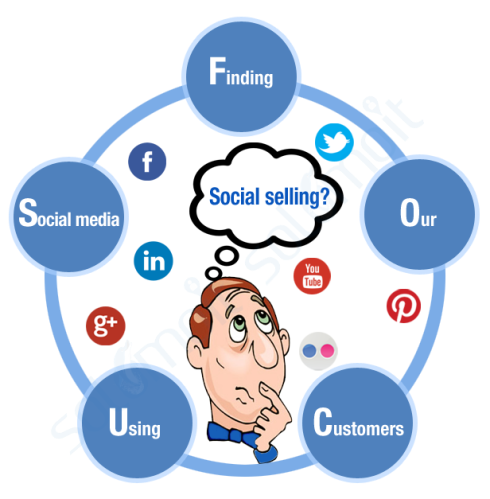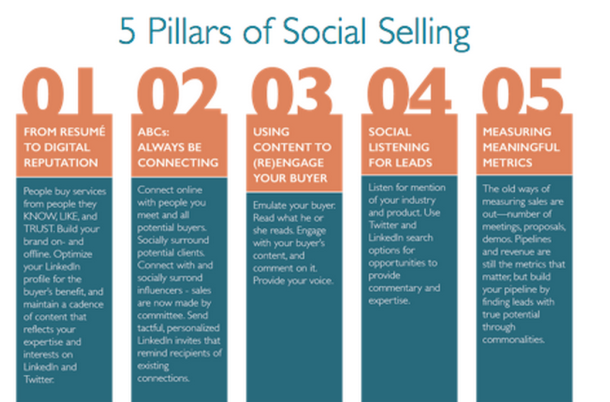Business loves the concept of social selling, tapping into the social networks combined with big data to lower the cost per lead and to speed up the sales and marketing process like never before is appealing. The good news for sales and marketing leaders who want to use social selling as a sales tactic is that “Big Data” is now a commodity. The sheer volume of data available to marketers today is staggering including social media insights, CRM data, sales records and web traffic alongside a multitude of other online sources. The adoption of social media by consumers and business buyers alike to buy and build our lives means the quantity of data is growing on a massive scale. To put it into perspective, social media currently accounts for over fifty two Trillion words shared every single day.
But big data is as valuable to a buyer as it is to a seller. Data is no longer the secret art of the marketing department as access to social data is there for everyone (buyers and sellers) with a few clicks of a mouse. Every minute of everyday companies share content and buyers share purchasing intent. The result in the past few years has seen a major disruption to the whole buyer-supplier relationship. Today potential customers can educate themselves on your products, your company, and people’s perception of you and even compare what the competition is offering without ever having to engage with you. They are doing this on social media forums and many other online sources without speaking to a sales person. Armed with the knowledge that data and social media has changed the way things are bought and sold, marketing and sales management have to utilise two very effective tools, “Big Data” and “Social Selling” to capture more revenue in an ever changing landscape.
Social Selling: Learn to Listen
A wider social selling strategy involves using big data to listen to what the markets are talking about and then share content that will grab their attention. Even basic social selling activity needs to tap into social conversations and content to understand buyer’s motivations. It may seem like a huge task to begin a data listening program but it is easier than you think. A few Google searches will throw up lots of free and paid marketing analytic tools to help you identify potential customers via social media.
Larger companies now use a whole raft of analytical software for data crunching, to get insights into customer behaviour analysis and buyer profiles so that marketing departments can discover answers to questions about the type of buyer who might consider buying from them. Smaller companies can use tools like Hootsuite Free, Socialmention, Twazzup or Addict-O-Matic amongst others to gain deep insights into keyword driven conversations.
Even without software tools, sales and marketing can gleam valuable information via social media conversations, online reviews and forums and then use this to help build connections with potential customers. Tools such as Socialbro, Rivaliq, ripjar and Connectors Marketplace allows sales people or marketing teams to trawl through blogs, social networks,, forums, news and reviews for brand, product or company mentions right down to specific keywords.
Big Data Insights for Improved Social Selling
Regardless of whether you are using software or digging around manually, there is no limit to the amount of information that can be gleaned using Big Data as part of your analytic tasks into identifying buyer sets that narrow down your prospect target list. Sales and marketing teams should be looking to gain the following insights from listening to social conversations and the social chatter.
Who is your Buyer: Prospective customers may be spread wide and deep but it is vital a business tries to condense them into “buyer persona’s”. Creating a typical customer with characteristics helps sales and marketing teams to identify, understand, and target. A point to note is buying behaviours varies by category on social media. For example 25% of Facebook and 34% of Twitter users reported buying tech tools or electronic devices after seeing recommendations or shares posted on these social network sites while 75% of B2B buyers now use social media to be more informed on vendors.
Target Specific Networks: Monitor what your prospects or buyer persona’s are talking about including mentions on your competitors. When it comes to social media, not all platforms are created equal or suit both B2C and B2B. Some social network sites produce higher leads and conversion rates than others. Even if you produce great content and follow all the best guidelines depending on your product or business, some will not perform. Focus in on where you can get higher sales conversions from specific networks as opposed to trying to cover off every one.
Identify Buyer’s Pain Points or Needs: To be successful at social selling you need to use data to discover what needs or product features are trending plus what questions/interests buyers are engaging with online. Part of your content strategy has to mirror these needs, plus when reaching out to potential customers using social selling, remember 90% of buyers never respond to cold calling (because no need has been identified)
What Type of Content do Buyers Engage with: Analyse the networks and data to see what type of content and from what sources do buyers like/read/interact with. It’s all figuring out what content and which information will influence their engagement with vendors
Map the Buyer’s Journey: The buyer’s journey is not changing, it HAS changed. More than any of the other insights that marketing leaders can provide to sales is mapping out the steps a buyer takes from awareness to consideration to purchase. Having the insight into how buyers gather information, what type of content, how they consider vendors, how they like to establish connections and take decisions is the critical data that makes social selling successful.
Using the insights from Big Data and Social Conversations, marketing team can now provide sales with the information, behaviours and likely interest triggers for the buyer persona. Then make social selling work by providing highly relevant content that matches these insights. Also a social selling training should be developed so that sales agents learn how, where, and when to connect with buyers and prospects on the various platforms like LinkedIn, Twitter, Facebook, Tumblr and other relevant social media channels.
It is the ability for sales to reach buyers in a highly personalised way with the right content, with the right context and at the right moment is the key to social selling in the era of Big Data.


No comments:
Post a Comment